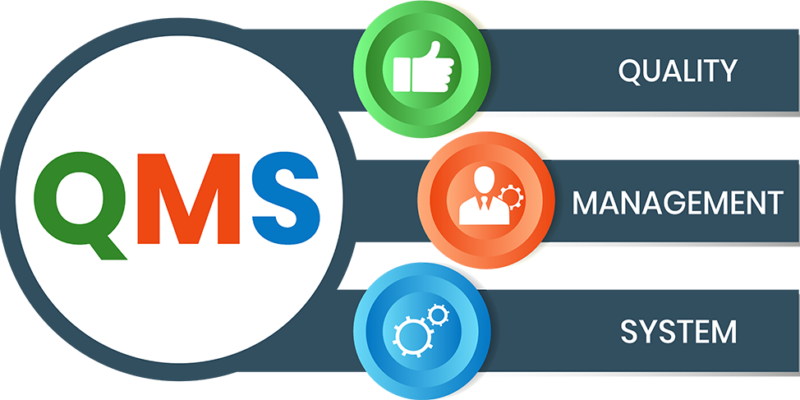An IATF audit assesses your compliance with IATF 16949, which is essential for automotive quality management. This article will guide you through the audit process so you know what to expect, offer preparation strategies, and provide information to help your company achieve certification.
Key Takeaways
- IATF 16949:2016 focuses on creating a quality management system in the automotive industry, emphasizing continuous improvement and customer satisfaction.
- The IATF audit process consists of planning, conducting internal audits, and follow-up reporting, which are essential for compliance and quality enhancement.
- Common challenges in IATF audits include documentation, timely corrective actions, and accountability, requiring proactive management to ensure effective compliance.
Understanding IATF 16949:2016

IATF 16949:2016 is a technical specification designed to develop a quality management system specifically for the automotive industry. Its primary goals are continual improvement, defect prevention, and reduction of variation and waste. The standard serves as a comprehensive framework, offering guidance and tools to ensure that companies consistently meet customer requirements and enhance overall quality and customer satisfaction.
Implementing IATF 16949 brings a multitude of benefits. Not only does it ensure the delivery of consistent, high-quality products and services, but it also significantly boosts customer satisfaction and provides various business advantages. The standard’s foundation lies in the principles of continuous improvement and customer satisfaction, making it a vital tool for any automotive supplier aiming to excel in the industry.
The IATF 16949 standard is built upon seven quality management principles:
- Customer focus
- Leadership
- Engagement of people
- Process approach
- Improvement
- Evidence-based decision making
- Relationship management
These principles reinforce the importance of a well-structured quality management system that not only meets but exceeds customer expectations. Adhering to these principles leads to substantial improvements in operational efficiency and product quality.
In essence, IATF 16949 emphasizes the importance of a systematic approach to quality management. It encourages organizations to continuously strive for excellence by preventing defects, reducing waste, and fostering an environment of continuous improvement. This not only enhances customer satisfaction but also ensures long-term business success.
Types of Audits in IATF 16949
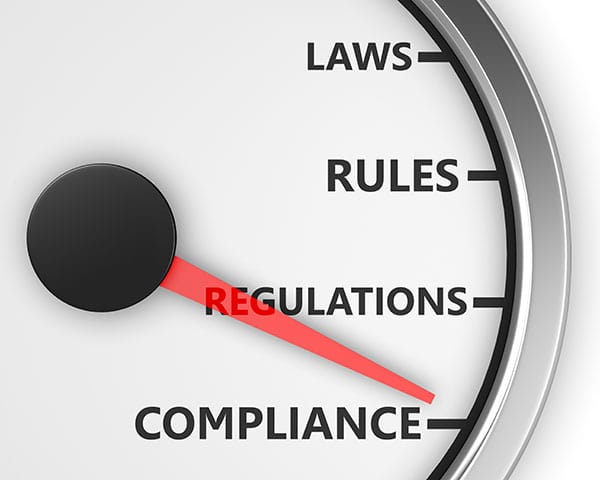
Audits play a pivotal role in ensuring compliance with IATF 16949 and enhancing the overall quality management system. There are three primary types of audits within the IATF 16949 framework: system audits, process audits, and product audits. Each type serves a specific purpose and focuses on different aspects of the quality management system.
System audits assess the overall effectiveness and compliance of the entire quality management system. Process audits evaluate critical processes within the QMS, ensuring that they are planned, implemented, and controlled effectively. Product audits, on the other hand, are designed to verify that the final product meets customer requirements and specifications.
Understanding the distinct purposes and methodologies of these audit types is essential for achieving a comprehensive evaluation of the QMS. Regularly conducting these audits not only ensures compliance with IATF 16949, but also enhances customer satisfaction and product reliability.
System Audits
System audits are comprehensive evaluations of the entire quality management system (QMS). These audits assess the overall effectiveness and compliance of the QMS with the IATF 16949 standards. By examining all elements of the QMS, system audits ensure that the organization is adhering to the established procedures and protocols.
Integrating customer-specific quality management system (QMS) requirements into the audit process is essential. This integration ensures that the organization effectively implements these requirements and meets customer expectations.
Through system audits, organizations can identify strengths, weaknesses, and opportunities for improvement, driving continuous enhancement of their quality management practices.
Process Audits
Process audits are a critical component of the IATF 16949 standard, focusing on the evaluation of key processes within the quality management system. According to IATF 16949, a manufacturing process audit is required every three years to assess the effectiveness and efficiency of the manufacturing process. These audits ensure that processes are planned, implemented, and controlled effectively, promoting continual improvement and risk management.
Organizations must develop a comprehensive audit plan that evaluates key processes, ensuring that the approach is tailored to any customer-specific requirements. This plan should include performance metrics for both the organization and its suppliers, ensuring compliance with the IATF 16949 standards. By regularly conducting process audits, organizations can identify areas for improvement and enhance their overall operational efficiency.
Measuring performance through relevant metrics is essential for assessing the effectiveness of process controls and risk management. Process audits provide valuable insights into how processes are functioning and highlight areas where improvements can be made. This proactive approach ensures that the organization continuously enhances its quality management practices and meets customer expectations.
Product Audits
Product audits are designed to evaluate the final product against specific customer requirements and specifications. These audits involve verifying that the final product meets the defined customer specifications, ensuring that it is fit for purpose. By conducting product audits, organizations can identify any discrepancies or non-conformities in the final product and take corrective actions to address them.
Verifying the final product’s compliance with customer requirements is crucial for maintaining high levels of customer satisfaction and trust. Product audits provide assurance that the products delivered to customers meet the highest quality standards and are free from defects. This not only enhances customer satisfaction but also strengthens the organization’s reputation in the market.
The IATF Audit Process: Step-by-Step
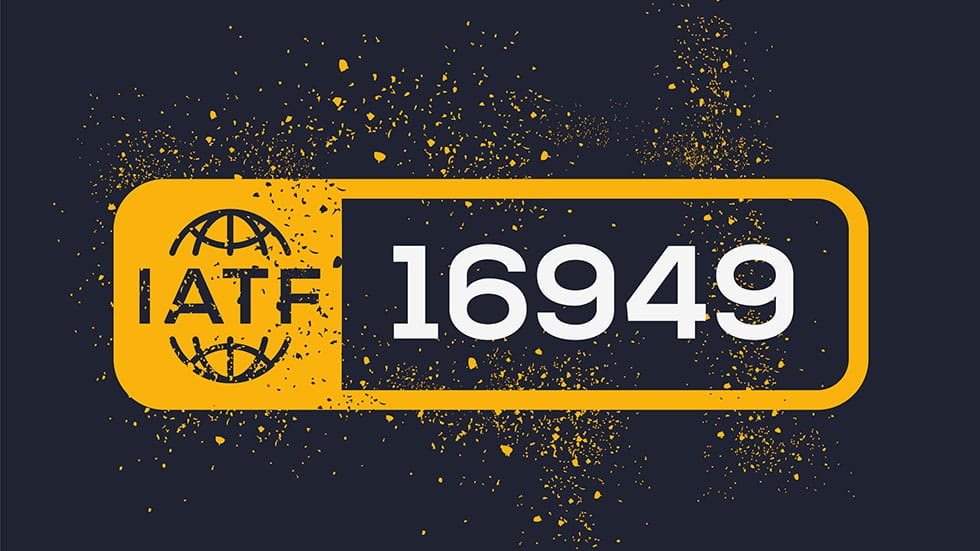
Embarking on the IATF audit process can seem daunting, but understanding its steps can transform this challenge into a powerful tool for quality improvement. The audit process is a thorough evaluation aimed at assessing and enhancing your organization’s Quality Management System (QMS). It involves a series of steps designed to ensure compliance with the IATF 16949 standards and to identify opportunities for continuous improvement.
The audit process is broadly divided into three main phases: planning the audit schedule, conducting the internal audit, and reporting and follow-up. Each phase is crucial and requires careful attention to detail. These steps are necessary for both internal and external audits. Extensive planning and execution ensure that your QMS meets or exceeds the stringent requirements of IATF 16949.
Understanding the intricacies of these phases will provide valuable insights into expectations during an IATF 16949 audit and how to navigate the audit process effectively. This guide delves into each phase, offers practical advice, and highlights key considerations to help you achieve a successful internal audit.
Planning the Audit Schedule
The cornerstone of a successful internal audit is meticulous planning. Crafting an effective audit schedule is essential to ensure that all critical areas of the Quality Management System (QMS) are thoroughly evaluated. Factors such as complexity, significance, past performance, risk, and importance should be considered when developing the audit schedule. Prioritizing areas based on risk assessments ensures that the most critical functions or processes receive the necessary attention.
An effective audit plan for IATF 16949 audits will:
- Outline the audit schedule
- List the composition of the audit team
- Note the audit criteria
- Include the methods and tools to be used during the audit.
The audit is prepared by the auditors, and the schedule will be shared with process owners to facilitate preparation and ensure that everyone is aligned with the audit objectives.
Audit Schedule Flexibility
Expect the audit schedule to be both dynamic and flexible after the actual audit begins. Flexibility allows for adjustments based on real-time feedback and evolving priorities in your company. The direction of the audit is meant to accommodate changes such as customer-specific requirements, complaints or specific process adjustments. By integrating flexibility into the audit plan, the auditor can respond to unforeseen circumstances without compromising the integrity of the audit.
A well-planned audit schedule not only ensures compliance with IATF 16949 but also fosters a culture of continuous improvement. As you review the schedule, notice how it systematically addresses high-risk areas and involves all stakeholders. This all-inclusive process enhances overall quality management practices and ensures a successful internal audit.
Conducting the Audit
Internal Audits
The internal audit process is a critical component of the IATF 16949 framework, aimed at evaluating the effectiveness of the Quality Management System (QMS) from an internal perspective. By definition, internal audits are conducted at your organization by employees of your company. The employees chosen to conduct the audit must be trained, qualified auditors to ensure the audit is performed correctly and documented in line with company procedures. Internal audits should be viewed positively, as they not only find areas to address prior to the external audit, but they also provide invaluable insights into areas for continual process improvement.
External Audits
External audits are conducted by accredited IATF auditor organizations.
Pre-Audit Meeting with Auditors and Process Owners
Before conducting an audit, either internal or external, the auditors should meet with process owners to confirm the audit plan and its feasibility. This collaborative approach ensures that the audit is well-planned and that all parties are prepared.
Conducting the audit involves a detailed examination of all components of the QMS, ensuring that processes are not only compliant but also effective. During the audit, information is gathered through interviews, observations, and document reviews to verify compliance with the QMS.
A well-executed audit provides evidence of compliance and highlights opportunities for improvement. The main focus should be on process improvement, utilizing data reviews to select appropriate audit trails. By adopting a systematic approach in conducting audits, organizations can drive continuous improvement, and enhance their overall operational efficiency.
Reporting and Follow-up after the Audit
Once the audit is completed, generating and sharing the audit report promptly is vital. This report documents the findings and provides a basis for follow-up actions. Immediate documentation of audit findings ensures clarity and facilitates the implementation of corrective actions.
In addition to providing the audit report, conducting a closing meeting with a process owner is an essential step in the audit process. This meeting provides an opportunity to discuss the audit findings in detail and identify potential areas for improvement. Engaging process owners in this discussion fosters a collaborative approach to addressing non-conformities and implementing corrective actions.
Follow-up actions are vital to ensure that the identified non-conformities are addressed promptly and effectively. Continuous monitoring and review of these actions help maintain the alignment of quality management practices with IATF 16949 standards. This proactive approach both enhances compliance and drives overall operational excellence.
Selecting and Training Internal Auditors
Selecting and training internal auditors is a critical aspect of the internal audit process. Qualified auditors or consultants are essential for conducting effective internal audits. The selection process should focus on identifying individuals with the necessary skills, knowledge, and experience to perform comprehensive evaluations of the quality management system.
Training IATF 16949 internal auditors is equally important to ensure they are well-equipped to conduct audits in line with the IATF 16949 standards. This training should cover all relevant aspects of the standard, including audit principles, automotive quality standards, and the automotive process approach.
Investing in the development of internal auditors enhances internal audit capabilities and drives continuous improvement, particularly for the internal auditor.
Competency Requirements
Internal auditors must possess a solid understanding of both IATF 16949 and its relevant core tools. Effective January 1, 2022, new auditors are required to complete training on FMEA, Control Plans, MSA, and SPC. This comprehensive knowledge ensures that auditors can effectively evaluate the quality management system and identify areas for improvement.
Additionally, internal auditors must demonstrate their ability to plan, execute, report, and resolve audit findings. They should also stay abreast of any changes in relevant requirements to ensure their skills remain current. By meeting these competency requirements, internal auditors can perform thorough and effective audits, contributing to the organization’s continuous improvement efforts.
Ongoing Training and Development
Continuous training is essential for maintaining the required competencies of internal auditors in IATF 16949. Participating in advanced auditor training helps ensure compliance with the latest IATF 16949 requirements and keeps auditors updated on best practices and emerging trends. This ongoing development is crucial for ensuring that internal auditors remain effective in their roles and can contribute to the organization’s continuous improvement efforts.
Fostering a culture of continuous learning ensures that internal auditors are always equipped with the latest knowledge and skills. This not only enhances the effectiveness of internal audits but also drives overall operational excellence and compliance with the IATF 16949 standards.
Preparing for an IATF External Audit

Preparing for an IATF external audit requires thorough planning and preparation. Effective preparation involves allocating ample time to meet certification goals and ensuring that all necessary documentation is in order. Data gathered from internal audits can be invaluable in identifying underperforming areas and prompting necessary improvements.
Managing compliance documentation can be a significant challenge, especially when relying on traditional methods such as paper checklists and spreadsheets. To overcome this hurdle, organizations should ensure that all documents are reviewed, approved, and communicated to relevant personnel before the audit. This proactive approach helps demonstrate adherence to IATF standards and enhances the chances of certification success.
The preparation process should be thorough and methodical, addressing all aspects of the quality management system. Ensuring all necessary documentation is in place and the facility is prepared allows organizations to approach the external audit with confidence and achieve certification.
Document Review
Reviewing documents is a critical step in preparing for an IATF external audit. Ensure that all documents are compliant and and demonstrate adherence to IATF standards. Effective record-keeping is crucial for demonstrating compliance. Detailed documentation of past audit processes and remedial actions is all-important when reviewing documentation readiness.
To ensure compliance and accessibility, it’s critical to review, approve, and communicate each document’s status to relevant personnel before the audit. This thoroughness ensures that all necessary documentation is in place, and enhances the organization’s readiness for the external audit.
Facility Preparation
A clean and organized facility is necessary to identify nonconformities during the audit process. Effective housekeeping and on-site document control are essential components in preparing a facility for an IATF audit. Maintain clean work areas and ensure that all necessary documentation is organized and accessible prior to the external audit.
Facility readiness involves not only cleanliness, but also ensuring that all processes are running smoothly. Focus on these aspects to create a positive impression during the audit and enhance the chances of achieving certification success.
Employee Readiness
Preparing employees for the audit is another critical element to achieve a successful outcome. Clear communication of the audit’s scope and objectives is essential to ensure employee preparedness for the IATF audit. By understanding the objectives of the audit, the probabilty of optimistic buy-in by employees increases, and with it the likelihood of success. Employees can better fulfill their roles and responsibilities without fear, leading to a smoother audit process and enhanced overall compliance.
Employee readiness also involves training or refreshing employees on their specific roles and responsibilities, and how they relate to the audit process. Well-prepared employees contribute to a more efficient and effective audit process, ultimately leading to greater compliance with IATF 16949 standards.
Scheduling Time for the Audit
The time it takes to complete an IATF 16949 internal audit depends on a number of factors. The Initial Audit has two parts. The first stage, called a readiness review, is relatively quick and usually takes one to two days per site. This stage is followed up one to two months later with the second part, the Certification Assessment. This second part is much more extensive and the time it will take depends on the size of the company, number of sites, and the complexity of its processes. Having a history of past audits can help in planning time for future audits.
The audit cycle for IATF 16949 is to conduct an audit every three years. This means that the maximum time an audit can take is three years, whereafter another audit would immediately start after the first one was complete. However, it is extremely rare for an audit to take the entire cycle time.
Management Review and Continuous Improvement
Audit results are a major input to the management review process, which must take appropriate actions based on the review of quality system strengths, weaknesses, and opportunities for improvement. Internal audits help identify recurring non-conformities, similar issues, and top processing concerns that can guide continuous improvement efforts.
Prompt resolution of nonconformances is essential to mitigate risks and improve overall operational efficiency. Top management needs to have confidence that audits are finished on time. They must also be conducted effectively to promote accountability within the organization. The IATF standard mandates that management must be accountable. Additionally, it requires evidence of competency from both workers and auditors to guarantee the effectiveness of the QMS.
The PDCA (Plan, Do, Check, Act) cycle is an effective method to guide the continuous improvement process. Preventing defects and reducing waste are core goals of the IATF 16949:2016 standard, which supports the overall continuous improvement strategy.
Common Challenges in IATF Audits and How to Overcome Them
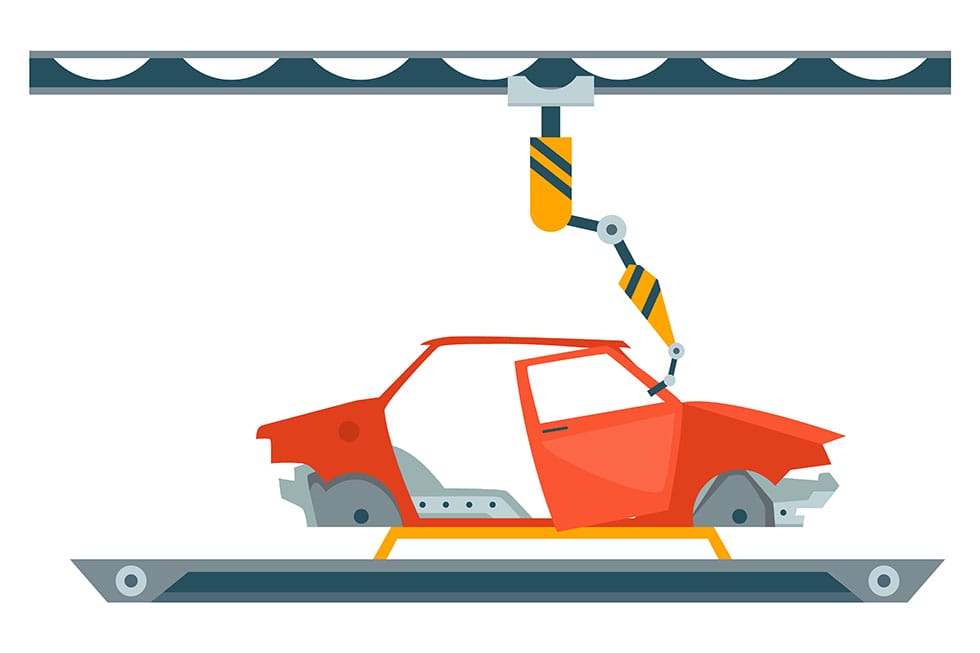
IATF audits can be challenging due to various factors, including documentation processes, corrective actions, and accountability issues. Properly managing these challenges is essential for achieving compliance and enhancing the overall quality management system. Common challenges may include poor record-keeping and documentation practices, untimely corrective actions, and failing to maintain accountability.
Record-keeping and documentation are essential to demonstrate compliance with the IATF standard. Challenges arise when mandatory records are not stored and retrieved properly. Timely corrective actions are essential to address non-conformances swiftly and minimize delays and inefficiencies. Maintaining accountability ensures that management is responsible and employee competence is upheld through regular audits and training.
Overcoming these challenges requires a proactive approach and a commitment to continuous improvement. Effectively addressing these issues enhances compliance with IATF 16949 and drives overall operational excellence.
Record Keeping and Documentation
Mandatory records are important in the context of IATF compliance as they show if issues are addressed and if continuous improvement is taking place. For compliance with the IATF standard, it is required to document processes and provide proof of audits conducted. Challenges associated with paper-based audits include providing evidence of accountability and competence due to unmanageable paperwork.
Using paper-based checklists for record-keeping leads to paperwork piling up, necessitating manual storage and organization. Transitioning to digital record-keeping solutions can help streamline this process, making it easier to manage and retrieve records as needed.
Timely Corrective Actions
Taking timely action on non-conformances is essential to maintain efficiency within the supply chain. Prompt actions on non-conformances prevent additional defects, which in turn reduces waste throughout the supply chain. Effective documentation of actions taken on nonconformance requires timely monitoring and proper documentation.
In summary, timely corrective actions combined with effective documentation are key to overcoming challenges related to non-conformances. By addressing issues promptly and accurately, organizations can enhance their overall operational efficiency and comply with IATF 16949 standards.
Maintaining Accountability
The IATF standard necessitates active involvement of management in audits, which includes overseeing audit completion and handling action plans. Management’s active involvement in the audit process ensures accountability and drives corrective actions.
Regular audits and appropriate training are needed to maintain accountability and competency within the organization. Implementing training programs aligned with audit findings ensures that employees remain competent in their roles and can contribute to the overall effectiveness of the quality management system.
Summary
In summary, understanding and navigating the IATF 16949 audit process is crucial for any organization in the automotive industry. From planning the audit schedule to conducting internal audits and preparing for external audits, each step requires meticulous attention to detail and a commitment to continuous improvement. By adhering to the principles and guidelines outlined in this article, organizations can enhance their quality management practices and achieve successful certification.
Ultimately, the journey towards IATF 16949 certification is one of continuous learning and improvement. By embracing the audit process and addressing challenges proactively, organizations can drive operational excellence and deliver high-quality products that meet and exceed customer expectations. We hope this guide has provided valuable insights and practical advice to help you navigate the IATF 16949 audit process with confidence.
EMDS plays a significant role in ensuring IATF 16949 audits are successful. Our quality compliance consulting includes expert QMS development and maintenance, ensuring a major piece of the audit is done right. We also provide two types of IATF 16949 training programs: one for awareness and one to train internal auditors. Contact us for more information!
